Search engines are constantly evolving their algorithms to ensure that the highest-quality content is surfaced in response to user queries. And as far as they’re concerned, receiving a high volume of quality links from external websites suggests that your content is more trustworthy and less spammy.
But that’s only part of what makes creating valuable content and investing in inbound marketing so valuable these days. Because so many brands use content marketing, failing to invest in content puts you at risk of being left behind.
In this guide, I’m going to share the tactics that will help you create linkable high-quality content for your website as well as use that content for link building to your website.
Link Building with Content Marketing
Link building is a powerful strategy to enhance your website’s authority and visibility.
Understanding the intricacies of link building and its symbiotic relationship with content marketing is, therefore, key to a successful digital marketing strategy.
Understanding Link Building
Backlink acquisition is about establishing connections between websites through hyperlinks.
Link building works in two important ways. First, search engines use backlinks as discovery tools to quickly locate new web pages. Second, these backlinks serve as endorsements that help search engines determine how valuable a page is and, in turn, how well it should rank. This minimalist SEO philosophy shows that you can often get 80–90% of your SEO results by ensuring your content is comprehensive and that your backlinks are seen as strong endorsements.
When strategically formed, these connections contribute significantly to a site’s SEO performance.
The Role of Links in SEO and How They Affect Rankings
Links play a pivotal role in the world of SEO, and recent updates from Google reinforce their significance.
From influencing search engine algorithms to determining the authority of a webpage, the impact of links is profound.
Search engines view links as endorsements, helping them assess the relevance and credibility of a website. When a webpage receives links from high-quality and authoritative sites, it is seen as a trusted resource.
Google values link quality over quantity.
Hence, creating natural, relevant, high-quality links is more useful in the long run than using manipulative tactics.
Moreover, Google’s emphasis on E-E-A-T (Expertise, Experience, Authoritativeness, Trustworthiness) underscores the role of links in establishing a website’s authority:
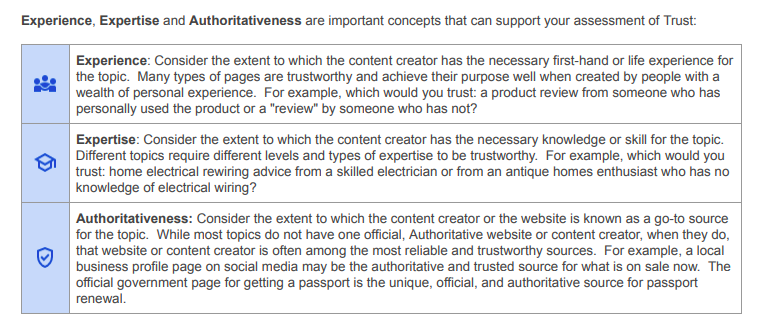
Websites with a strong link profile are more likely to be authoritative sources of information, contributing to improved rankings.
Different Types of Links: Natural, Manual and Self-Created Links
Not all links are created equal. Backlinks are broadly divided into the following categories:
- Natural Links: These links result from organic occurrences, often stemming from other sites finding your content valuable and linking to it naturally. Natural links are typically considered the most valuable by search engines, as they reflect a genuine endorsement of your content.

- Manual Links: Unlike natural links, manual links are acquired through intentional efforts. This involves outreach, relationship building and collaboration with other websites or platforms to secure a link. While these links may require more effort, they allow for a targeted approach in aligning your content with specific audiences and authoritative sources.
- Self-Created Links: These links are those that you create yourself through blogging, forum signatures, comments or user profiles. Google and other search engines can detect and devalue self-created links, especially if they appear spammy or manipulative. Hence, quality and relevance are paramount, even in self-created link building efforts.
Striking a balance and incorporating a diverse range of links in your strategy is key to building a robust online presence and enhancing your site’s authority in the eyes of both users and search engines.
We at Single Grain take this a step further by finding ways to programmatically place these links for our clients in practically no time at all.
Power of Content in Link Building
High-quality content is a magnetic force, drawing in valuable links that contribute significantly to a website’s authority and visibility.
How High-Quality Content Attracts Links
Comprehensive, helpful and well-presented content attracts the most links.
When writers and marketers focus on creating quality content, their work becomes a go-to resource on the topic. This quality means that other sites are more likely to link to it as a reference, thus forming a web of digital connections (i.e. links) anchored in the content’s value and relevance.
Moreover, original research and data-driven insights contribute to a content piece’s attractiveness for linking. This type of unique content stands out in a sea of generic information – and not just to readers, but also to other content creators who want to provide their own blog audience with valuable resources.
From the perspective of search engines, this kind of content is a goldmine. When they recognize the value of quality content, search engines are more likely to reward it with improved rankings. This increased visibility, in turn, creates a positive feedback loop, attracting even more links and reinforcing the content’s value.
Types of Content That Naturally Attract Links
Here are the best types of content that have the power to attract valuable backlinks:
- Infographics: Visually compelling and informative, infographics distill complex information into easily digestible visuals. Their shareable nature makes them ideal for attracting links from websites looking to enhance their content with engaging visuals.
- Why, What & How-To Posts: Articles targeting question-based keywords that attract both links and organic traffic. A survey by Backlinko suggests that this content helps earn links:

- In-Depth Guides: Detailed guides that thoroughly explore a subject demonstrate expertise and become key reference materials.
- Data-Driven Pieces: Content backed by data and statistics holds a unique appeal. Data-driven pieces like research studies or surveys become valuable references for other content creators, prompting them to link to the source.
- Expert Interviews and Podcasts: Featuring interviews with industry experts or hosting podcasts can attract links from those who value the insights shared. Other websites may link to these interviews to reference authoritative voices.
- Resource Lists and Curated Content: Compiling resource lists or curating content from various sources into a comprehensive guide can attract links from those featured in the list or from websites seeking to share valuable compilations.
By consistently delivering high-quality, shareable content, websites can enhance their link profiles and solidify their position as authoritative sources within their respective industries.
Now let’s dive into how to create content that naturally attracts high quality backlinks.
Part 1: Creating Linkable High-Quality Content
In the introduction, I explained that linkable, well-crafted content can help you build links to your website. But let’s step back for a moment and explain what exactly quality material is.
High-quality content:
- Is well-researched and provides accurate information
- Speaks directly to your target audience
- Contains impeccably written copy
- Uses supplemental images, graphs, videos or infographics, when appropriate
- Is as complete and up to date as possible at the time of publishing
Succeeding with these five points requires that you start creating content with in-depth research. Without this background, you won’t know what’s truly “high-quality” within your niche.
Using the Skyscraper Technique
To see where you stand out with content, we’re going to use a process called the Skyscraper Technique, which was coined by Brian Dean of Backlinko.
The Skyscraper Technique involves three steps:
- Step 1: Find link-worthy content
- Step 2: Make something even better
- Step 3: Reach out to the right people

As a side note, since his original publication, Dean has expanded the Skyscraper Technique to a “2.0” version that takes keyword intent into consideration. His post on the changes is well worth the read if you’re serious about successful content.
All this research might make your content longer, but that’s a good thing. According to another study in which they analyzed 912 million blog posts, long-form content gets more backlinks and social shares.
For example, Dean found that “Content longer than 3,000 words gets an average of 77.2% more referring domain links than content shorter than 1,000 words”:

The ideal content length for social shares, according to Dean’s research, is a little shorter. But it’s still important to write at least 1,000 words per post. He says, “According to our data, long-form content generates significantly more social shares than short content. However, our research indicates that there’s diminishing returns once you reach the 2,000-word mark”:

Keyword Research for Content Topics
Keeping the principles of the Skyscraper Technique in mind, do some basic keyword searches on Google to get a feel for the content that’s already out there in your industry. Start by Googling common questions or queries related to your business:

Pay attention to the drop-down “search suggestions” on Google. This will show you which keywords and phrases people use the most to find out more about your topic. Each of these search suggestions could become a topic that you explore in greater detail in a content piece.
You can also use sites like Quora to uncover more about the questions people are asking in your industry. For example, you can type “wordpress blogs” into Quora’s search bar to see the most common questions:

This process may help you identify new angles that you can take on existing topics. If everyone is talking about the technical side of starting a WordPress blog, you could talk about the psychological side. If everyone is writing generic articles on how to get more traffic to a WordPress site, you could write niche-specific articles.
BuzzSumo is another great tool for this process. Use it to search for either industry-specific keywords or your competitors’ websites, and you’ll be able to see the most popular content pieces over a set period of time, as determined by social shares:

From your research, try to come up with 5-10 possible content piece topics. Choose one to start with, based on what your research has told you about the topics that your audience is most interested in, as well as your own understanding of what your prospects and customers need to hear from you.
Aligning User Intent with Your Content Strategy
Understanding the intent behind user searches is key to delivering relevant and valuable content:

This process involves recognizing what users are searching for and making sure your content matches their queries. By integrating keywords identified in your research into various sections of your content, including headers, you can improve the alignment with what users are actively seeking.
Write content that comprehensively addresses user queries and provides comprehensive solutions. Whether users are seeking information, looking to make a purchase or aiming for entertainment, tailor your content to meet these specific needs.
It’s also important to consider the different stages of the buyer’s journey. Each stage — awareness (TOFU), consideration (MOFU) and decision (BOFU) — requires a different type of content:
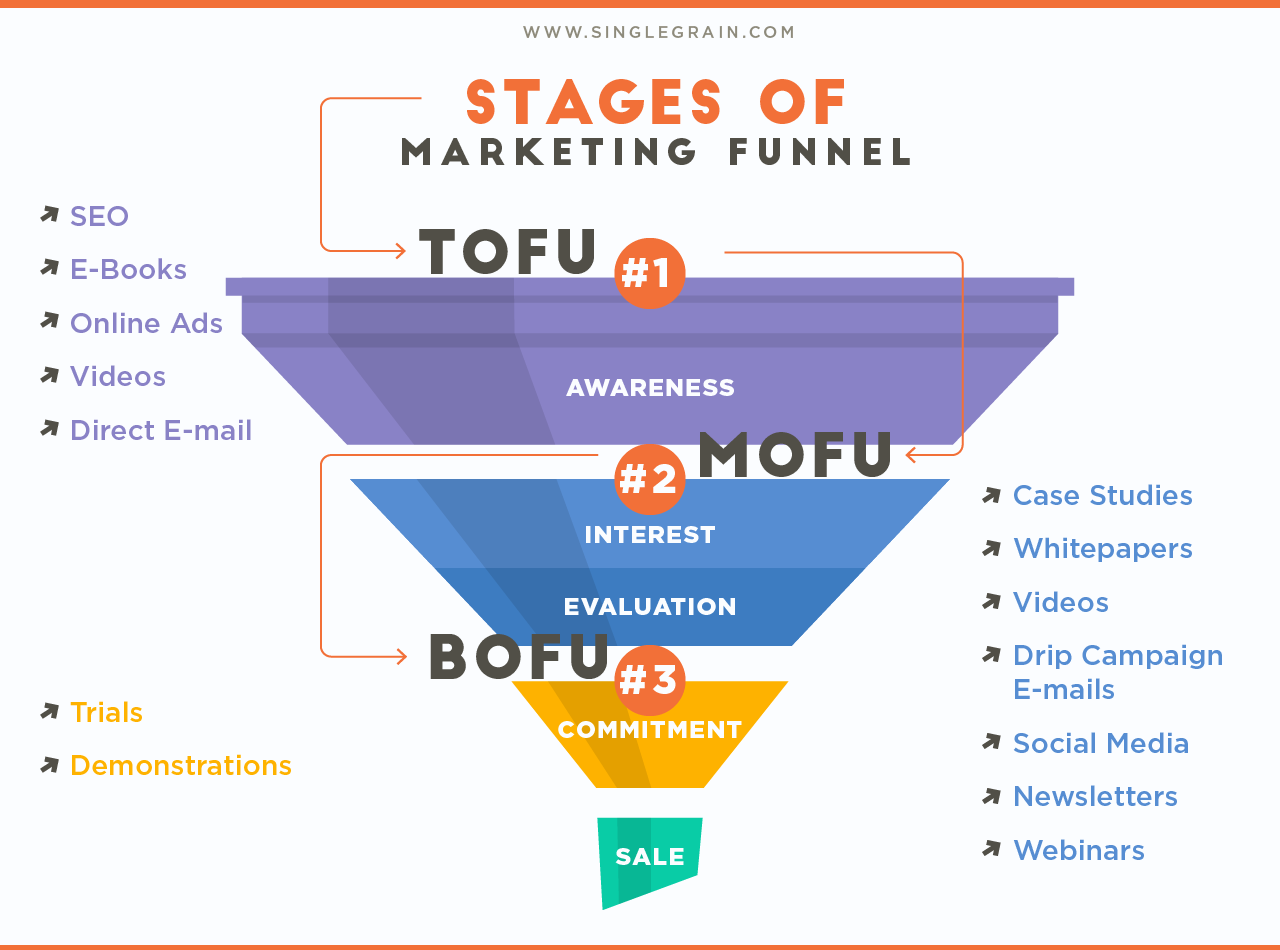
For instance, during the awareness stage, users might be looking for general information, while in the decision stage, they might need more detailed comparisons or product information. By aligning your content with these stages, you can guide users smoothly along their journey.
And, of course, regularly analyze your user engagement metrics, feedback and search trends to refine your strategy so that your content continues to align with user intent and exceeds their expectations.
7 Ways to Create Expert-Level Content
Now that your topic is ready to go, it’s time to start writing.
But if you still aren’t sure what to put in your articles, consider the following seven strategies to make sure your finished product supports both your website visitors and your future SEO link building efforts:
- Find Existing Research to Cite. Dive into academic journals, reputable industry publications and authoritative websites in your niche to find relevant research. Use this research to back up your claims, which will provide your content with a solid foundation of credibility. You can also include governmental reports, white papers and publications from recognized research institutions (again, this will vary depending on your field).
- Create Your Own Custom Research. Initiate surveys, polls or in-depth market studies tailored to your industry’s specific nuances. By gathering first-hand data, you not only contribute original insights, but also position your content as a unique and valuable resource that can’t be found elsewhere.
- Quote Industry Experts from Existing Sources. Explore reputable industry publications, interviews with experts or keynote speeches delivered by experts in your niche. Select quotes that resonate with the themes of your content to reinforce your key points.
- Conduct Your Own Interviews for Custom Quotes. Reach out to experts for interviews, either in person or virtually. Use these exclusive insights to add a unique and authoritative voice to your content.
- Cite Specific Resources to Create Credibility. Reference and link to specific studies, books or articles that support your points. This not only adds depth to your content, but also demonstrates thorough research and knowledge of the subject (which Google loves to E-E-A-T!).
- Incorporate Data Visualizations and Infographics. Use graphs, charts and infographics to present complex data in an easily digestible format. Visual aids can make your content more engaging and shareable, which increases its appeal for link building.
- Leverage Case Studies and Real-Life Examples. Include case studies or real-life scenarios to illustrate your points. For instance, if your content revolves around successful digital marketing strategies, showcase a case study of a company that effectively utilized a particular approach to achieve notable results. Break down the key components of their strategy, highlight measurable outcomes, and draw insights that can be applied more broadly.
SEO Best Practices in Content Creation
Implementing SEO best practices in content creation is essential for link building content marketing. Here are key SEO best practices to keep in mind when writing:
- Optimized Headings and Structure: Organize your content with clear headings and subheadings. Use your primary keywords in these sections.
- Meta Tags Optimization: Create user-friendly meta titles and descriptions for each page. Although search engines have become smarter at picking titles and descriptions from the content instead of the meta tag, I recommend using keywords in meta tags naturally.
- Responsive Design: Make sure your website and content are optimized for mobile. Google prioritizes mobile-friendly websites, and responsive design enhances user experience, contributing positively to search engine rankings.
- Optimized Images and Multimedia: Compress and optimize images for faster loading times. Use descriptive filenames and alt text to provide context for search engines and improve accessibility. Multimedia elements, when relevant, can enhance engagement and contribute to SEO.
- Internal Linking: Incorporate internally strategically from different pages on your website. Internal links guide users to other relevant web pages on your site, improving navigation and dwell time.
- URL Structure: Create clean and readable URLs that include relevant keywords. A clear URL structure aids both users and search engines understand the content’s topic.
- Regular Content Updates: Keep your content up-to-date by regularly revisiting and refreshing it. Google prioritizes current and relevant information, and updated content signals that your website is actively maintained.
- Page Loading Speed: Optimize your website’s loading speed. Users and search engines prioritize fast-loading pages, and Google uses page speed as a crucial ranking factor.
By incorporating these SEO strategies into your content creation strategy, you can optimize your website for search engines while providing a positive user experience, ultimately improving your online visibility and organic search rankings.
Part 2: Building Links to Your Linkable High-Quality Content
Once you’ve published your linkable high-quality content:
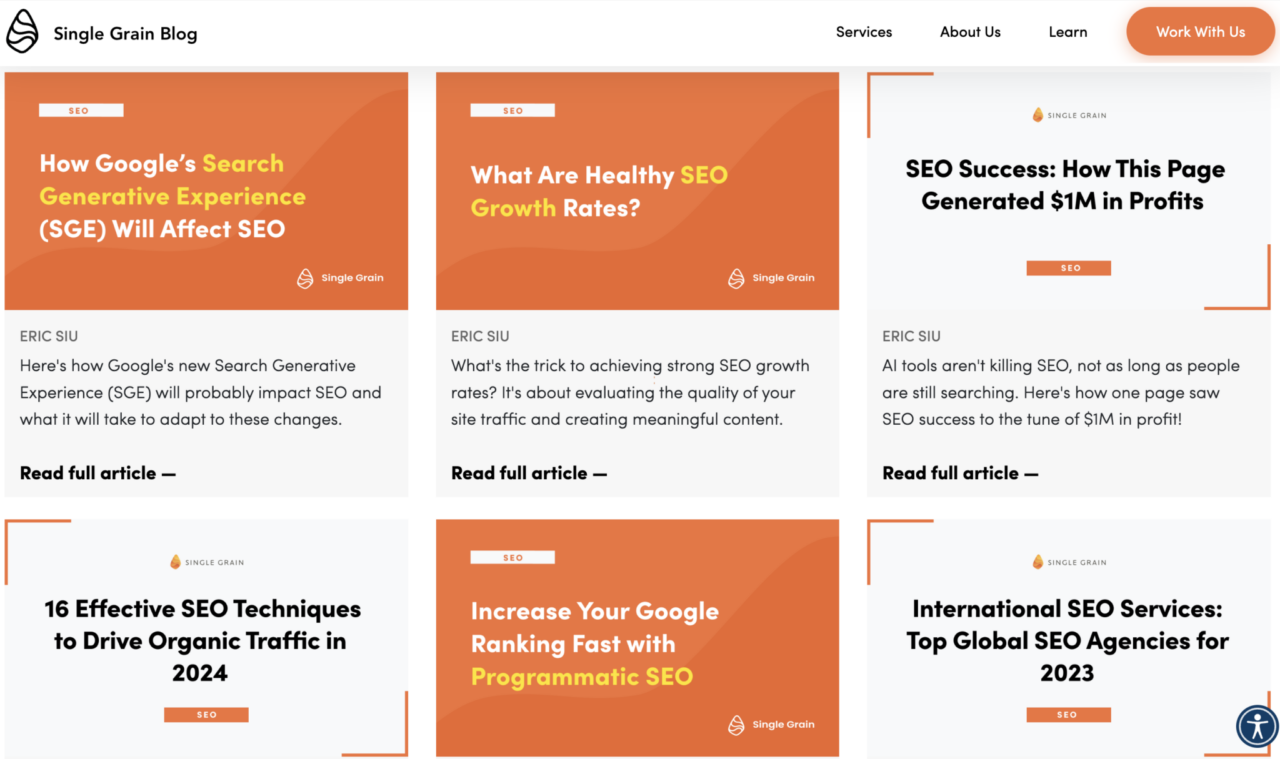
…your next goal is to actually build links to it.
Note: Consider incorporating link roundup strategies as one of the targeted tactics for building quality links.
Leveraging Link Roundups for Link Acquisition
But wait, what is a link round up? Most of the time, link roundups are weekly or monthly summaries of top links that sites share. We have one of our own called ‘5 Marketing Bullets’ where I share 5 marketing pieces that I found interesting for the week.
How to Find and Leverage Link Roundups
- Go to X Search and type in your ‘keyword + link roundup’.
- Repeat the process on Google and add your results to a spreadsheet with columns for URL, First Name, E-mail, DA, and Notes.
Bonus: Top Marketing Blogs That Regularly Run Link Roundups
- Danny Iny Mirasee.com
- Matthew Woodward at SearchLogistics.com
- UpCity team at UpCity.com
- Stacey Roberts at Problogger.net
- Shonali Burke at ShonaliBurke.com
- MaAnna Stephenson at BlogAid.net
- Glen Fisher at IDX.inc
- Linkarati roundup at PageOnePower.com
- Small business link roundup at SmallBusinessBonfire.com
- Ray Hiltz at RayHiltz.com
- Robin Strohmaier at r-rWebDesign.com
Playing the Numbers Game
The first step is playing the numbers game. The number of social shares, the number of votes and the number of comments you receive on your content all play a role in convincing people that your piece is valuable, popular and, ultimately, link-worthy.

This is why the second after you publish your content you need to start building up these numbers. Begin by sharing it on all your social media networks and scheduling it to publish multiple times (since your audience won’t all see it the first time you share it).
An experiment by CoSchedule found that sharing the same piece several times on social media drove 192% more click-throughs:

Also, be aware that the way you share your content on social media can influence how much engagement it receives.
For example, social posts with images get more likes, comments and shares than text-based posts. Even if your content piece is text-based – like a blog post – sharing it through an image update, rather than a text one, may increase its social shares.
Get comments. The best place to start is your email list. Send out a broadcast announcing your post and at the end of the email provide a clear call to action: that people stop by and share their thoughts on your blog post.
From there, try out the groups on Facebook that are built specifically for bloggers to reciprocate one good comment for another.
Earning Social Exposure
The next step is exposure. The more people that you reach with your content, the greater the number of links you’re likely to get from them. The fastest way to get exposure with your target audience beyond simply sharing it on your social accounts is through social media advertising.
Specifically, create ads for:
Do some social media outreach by finding people who have shared similar content using the pro version of BuzzSumo:

If you can find direct contact information for these people, try emailing them (Hunter is a great tool for finding email addresses). Otherwise, tweet or DM them about a post they shared and that you have a good one on the same topic you think they’d be interested in. Start with those sharers who have the most followers and retweets and work your way down the list.
Just in case your outreach is ignored, you can also combine link building methods by exporting lists of people from BuzzSumo who have shared similar content and then create Tailored Audiences for Twitter/X ads using their usernames. This is a great way to craft a relevant remarketing campaign for your target demographic.
Since Twitter/X takes a while to create Tailored Audiences, you might want to do this research prior to publishing your content so that your Tailored Audiences are ready when the content goes live.
Reaching Out to Influencers
Now it’s time to reach out directly to the people who are most likely to link to your content. If you’ve quoted or interviewed people in your content, start there. Otherwise, look for bloggers who are already linking to similar pieces.
BuzzSumo also offers a feature that allows you to view the articles that link to this piece of content, so as you are viewing sharers, look at the linkers too:

BuzzSumo makes your backlink research valuable by showing you links pointing to your website from other pieces of content. Seeing the social share potential of the blog will also help you determine if it’s a quality website that will drive traffic to your own site.
Using the results from that report, reach out to the blog author as well as the author who created the link to the similar post and let them know about yours. You’ll have a higher rate of success if you aim for the most recent posts, as they are more likely to be recently updated, as well as posts from authors who write link roundups.
From here, start looking for additional link roundups in your industry. They will usually have keywords like:
- [your topic] roundup
- best [your topic] links
- best [your topic] posts
- best [your topic] articles
- top [your topic] links
- top [your topic] posts
- top [your topic] articles
- Etc.
Reach out to those people directly so that they can include your content in their next edition.
Also be on the lookout for people who do roundups by email. In the search engine optimization world, the holy grail is the Moz Top 10. Subscribe to their emails (preferably in advance), familiarize yourself with the content they share, and then reply to the latest one to let them know about your suggestion for their next email. Subscribers to those emails might have blogs of their own and might link to yours.
Using Guest Blogging for Link Acquisition
Here are some guidelines to follow to leverage guest blogging for a successful link-building strategy:
- Identify Reputable Websites: Find sites with a strong online presence in your niche, high domain authority, and a history of publishing quality content. For instance, if your brand is a medical practice, you’ll want to find high-domain authority medical sites that share references to the topics your medical practice covers.
- Pitch Relevant Topics: When crafting pitches for guest blogging opportunities, it’s essential to tailor your content ideas to seamlessly align with the interests and preferences of the guest post site’s audience. Thoroughly research the type of content the site typically publishes and identify the topics that resonate most with their readership. Your pitch should reflect an understanding of the guest blog site’s themes and propose fresh, insightful angles that contribute value.
- Highlight Your Expertise: Showcase credentials and expertise in your guest blogging pitch. Mention how you are a subject-matter expert and why your content can be valuable for them. Whether through previous successful guest posts, industry accolades, or specific qualifications, highlighting your expertise instills confidence in the guest post site that you can deliver high-quality, authoritative content. Here is an example of a creative guest post pitch for inspiration:
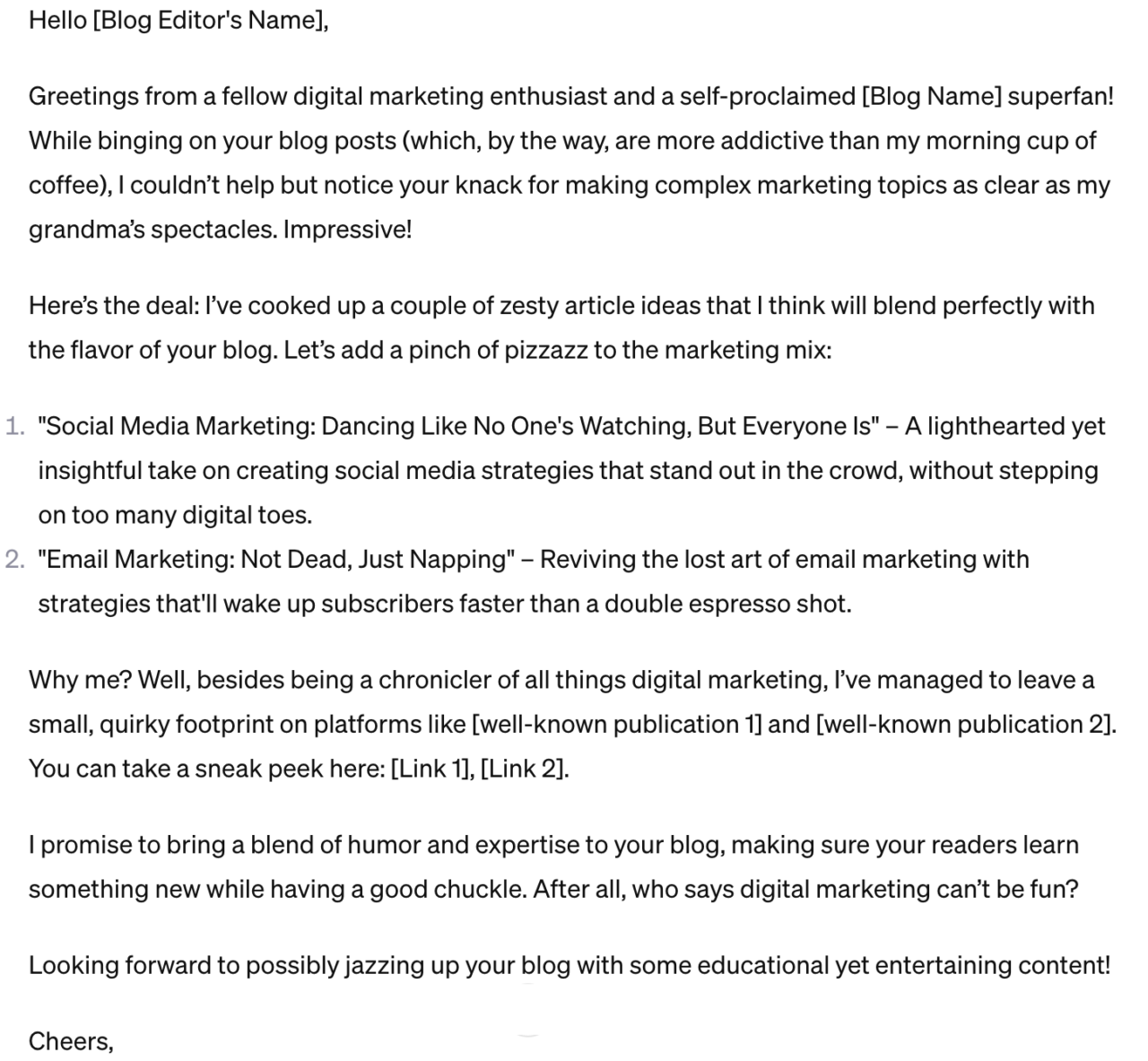
- Create High-Quality Content: Focus on delivering unique insights, actionable tips or thought-provoking perspectives that offer a fresh perspective or solve a problem for the target readership. Strive for clarity, cohesiveness and relevance, making certain your content aligns seamlessly with the guest post publishing website’s themes and goals.
- Follow Guest Posting Guidelines: Adhere to guest posting website guidelines regarding content and formatting. Pay attention to preferred content length, tone and formatting preferences. By following these guidelines, you’ll actually increase the chances of your content being accepted!
- Add Contextual Links in Your Content: Add relevant links to your website contextually within the article so that it blends naturally with the information.
- Include Author Bio with Links: Provide an author bio that is a concise yet informative overview of your expertise, experience and any relevant achievements. Including links to your website or social profiles enhances your online visibility and allows readers to explore more of your work.

- Promote Your Guest Posts: Actively share guest posts on your social media and within your network. By amplifying the visibility of your guest posts, you extend their influence beyond the immediate readership of the host site, ultimately increasing the value of your contribution.
Answering Questions with Your Content
Next, look for ways to answer questions with links to your content. Search for these opportunities in Q&A networks like Yahoo Answers and Quora, forums, and social media groups including Reddit:

Put some time into this strategy. As more and more marketers use Q&A forums to promote their content, getting noticed has become more competitive. If your only goal is to get a link for your content on a site like Quora, standing out might not be your priority.
Why not take advantage not just of the SEO benefit of the link, but of the perceived authority and influence that comes with proving your knowledge when answering questions?
Broken Link Building
This strategy involves finding broken links online and then helping site managers “fix” them by filling them with your content.
Here’s the fastest way to do it:
-
- Install “Check My Links.”
- Find pages on relevant sites with lots of outbound links.
- Use the extension to check for broken links.
- Install “Check My Links.”
Link Reclamation
This tactic is all about capitalizing on existing backlink opportunities that you’re missing out on. Whenever your brand is mentioned online without a link, use tools like Buzzsumo to monitor brand mentions and politely request a backlink.
Syndicating Your Content: Why Syndicate?
Once you’ve created a piece of content, you can also look for other sources where it can be syndicated, resulting in a link back to your website as well as greater exposure.
Choose sites where you know your target audience spends time. For example, if you mostly work with business owners, you’ll want to look at LinkedIn’s Pulse platform. Sites like Alltop and newer content curation services like Quuu can get the word out about your content while increasing your link-building potential as well.
Not all of these platforms will create SEO links, but they will allow you to gain more exposure for your content in a helpful way. And more exposure has the potential to lead to more links.
Using Analytics to Monitor Content Performance
Employing analytics to monitor content performance is essential to refine your strategy, maximize link acquisition and enhance overall SEO effectiveness.
Here’s how analytics can be leveraged to monitor content performance so that you can continue to improve your strategy:
- Backlink Analysis: Utilize tools like Ahrefs, Moz or Semrush to regularly monitor your backlink profile. Analyze new backlinks gained over time, assess the authority of linking domains, and identify patterns in your link acquisition. The below screenshot from Semrush displays a good backlink profile having links from several referring domains with a low toxic score and an overall high domain authority score.

- Link Placement and Context: Assess the placement and context of the acquired links within the content. Analytics can help you understand which sections of your content are attracting the most links and the relevance of the linking context.
- Social Sharing Metrics: Track social sharing metrics alongside your backlink data. Content that is shared socially often has the potential to attract more links. Identify popular social platforms for sharing and optimize your content for increased social visibility.
- Content Engagement Metrics: Analyze engagement metrics such as time on page, scroll depth and bounce rate for pages attracting backlinks. Understanding user engagement with your content can guide improvements and increase the likelihood of attracting quality links.
- Link Outreach Effectiveness: If you engage in outreach link building campaigns, use analytics to track the effectiveness of your outreach efforts. Measure response rates, conversion rates and the overall success of your outreach strategy.
By incorporating these analytics-driven practices, you can assess the impact of your link-building efforts, identify successful tactics, and refine your strategy to continuously improve link acquisition and overall content performance.
Conclusion: Actionable Takeaways and Future Trends
Here is a quick rundown of the steps to building links with content:
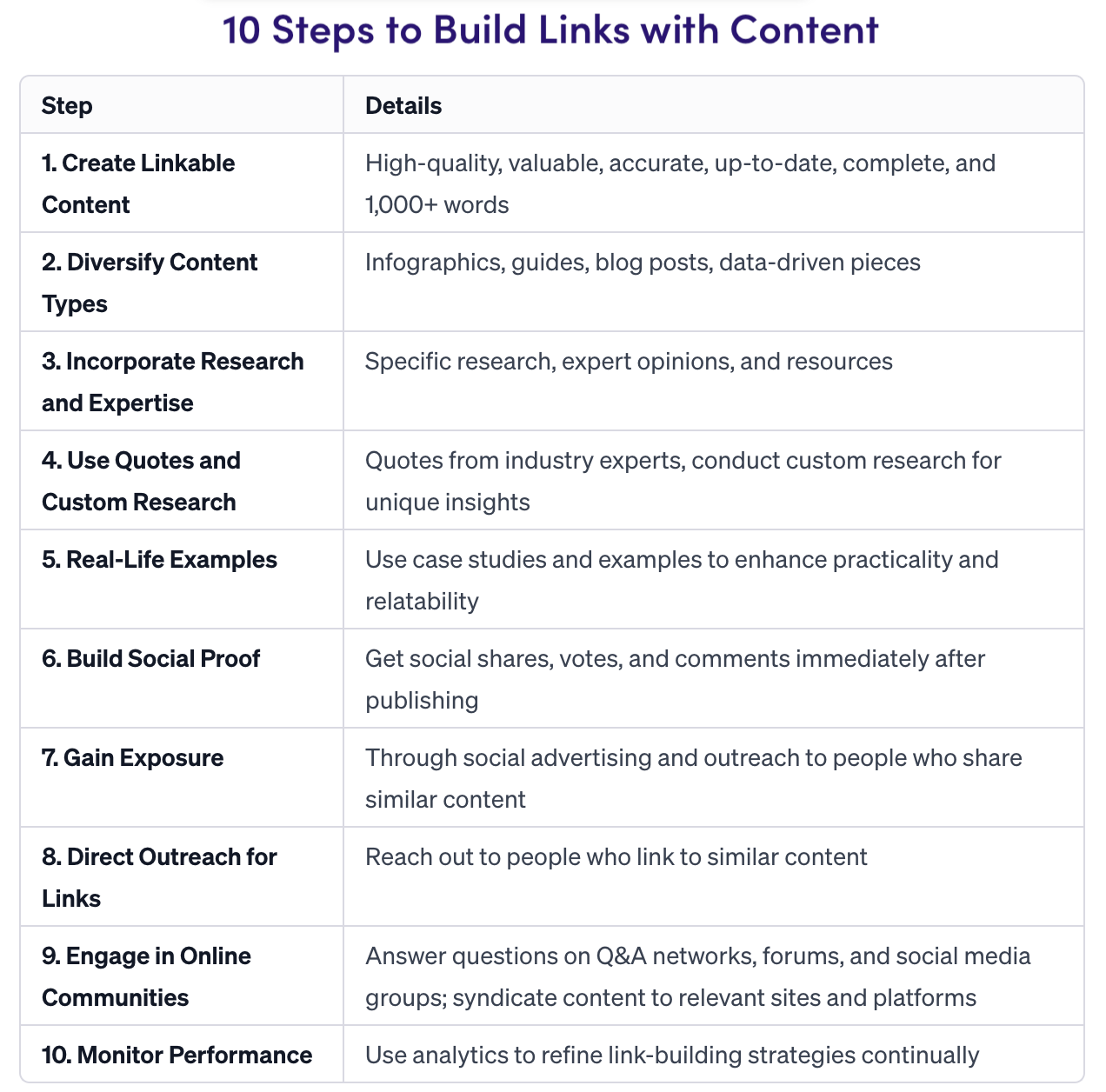
If you follow these steps each time you write an epic piece of content, you will ultimately create a library of linkable high-quality content on your website that drives up the overall authority of your domain with great, editorial links.
If you’re ready to level up your online visibility with high-quality backlinks, Single Grain’s link-building experts can help!👇
Content Link Building FAQs
-
What is content link building?
Link building with content involves creating high-quality, valuable content as part of a content marketing strategy to generate links naturally. It focuses on sharing information that is useful and relevant, encouraging other websites to link to it organically.
-
Why is content based link building effective?
Content-based link building is effective because it revolves around creating compelling content that others find worth linking to. High-quality links often come from providing useful, informative content, which in turn enhances the credibility and authority of a website in the eyes of search engines and users.
-
Is link building good for SEO?
Yes, it is a crucial aspect of SEO. Building links strategically as part of a link building campaign can significantly improve a website’s visibility and ranking on search engines. It’s important, however, to avoid spammy link building techniques as these can harm a site’s reputation and ranking.
-
What are the best practices for effective link building?
Best practices for effective link building include:
- Developing a strategic link building campaign that aligns with your overall SEO goals.
- Creating and promoting high-quality, engaging content that naturally attracts links.
- Diversifying the types of content (like infographics, blog posts, guides) to appeal to different audiences.
- Engaging in ethical link building strategies and avoiding spammy techniques.
- Building relationships with industry influencers and websites to facilitate organic link growth.
- Regularly monitoring and refining your link building strategies based on performance analytics.
-
What's the difference between white hat and black hat link building techniques?
White hat link building techniques are ethical and approved methods of building links, focused on creating high-quality content and forming genuine connections with external websites. This approach often involves content marketing, keyword research, and resource page link building, where you provide valuable content to be included on relevant resource pages.
White hat strategies aim to build links that are relevant and beneficial both for SEO and user experience.
Black hat link building, on the other hand, uses deceptive and spammy methods to acquire links. Techniques like buying links, using hidden texts, or engaging in link farms are considered black hat. These practices focus solely on manipulating search engine rankings without adding value to users.
Black hat strategies might provide short-term gains, but they pose a significant risk of penalization by Google and damage to a site’s reputation.
The key difference lies in the approach and intent: white hat link building is about adding value and adhering to search engine guidelines, while black hat tactics are about exploiting loopholes, often at the expense of quality and ethics.
-
Link building tools
Link building tools are software or platforms designed to assist in the process of building links. They can help identify link opportunities, track link performance, and manage outreach efforts. Tools can range from backlink analyzers to outreach and relationship management platforms.
Here are the top link building tools:
- Ahrefs: A comprehensive tool for backlink analysis, keyword research, and competitive analysis.
- Semrush: Offers extensive features for link building, including backlink tracking and competitor backlink audits.
- Majestic: Specializes in backlink analysis with a vast database for studying link profiles.
- BuzzStream: A tool for managing outreach and building relationships for link building.
- Moz Pro: Provides link analysis tools, including the ability to identify and track link building opportunities.
- Linkody: Focused on backlink tracking and analysis, offering insights into your link building progress.
- Pitchbox: An outreach platform that integrates with SEO tools, ideal for automating and scaling link building efforts.





